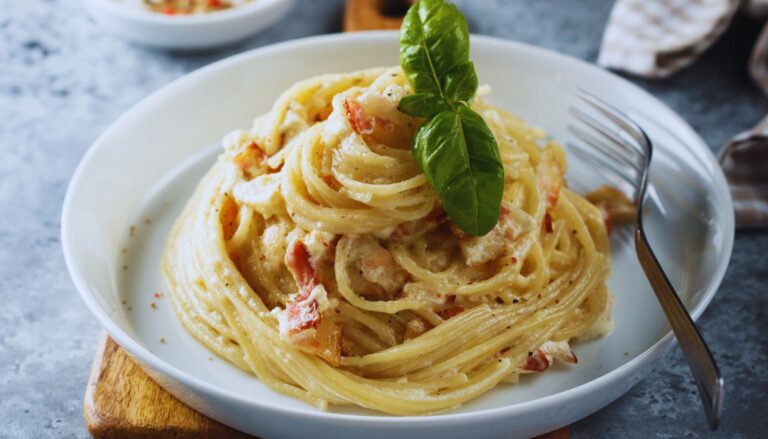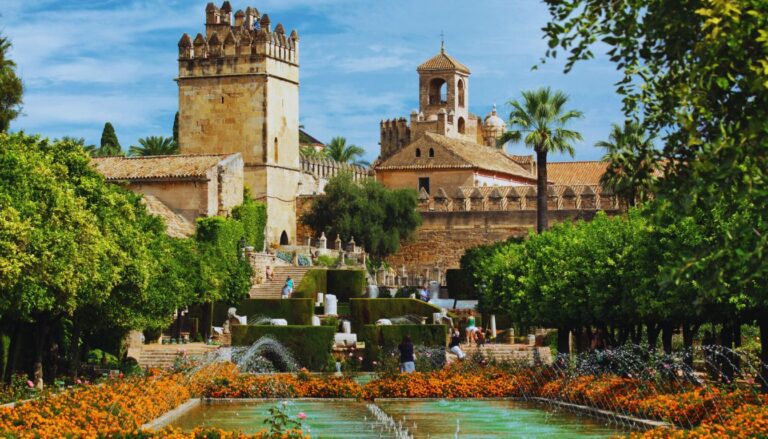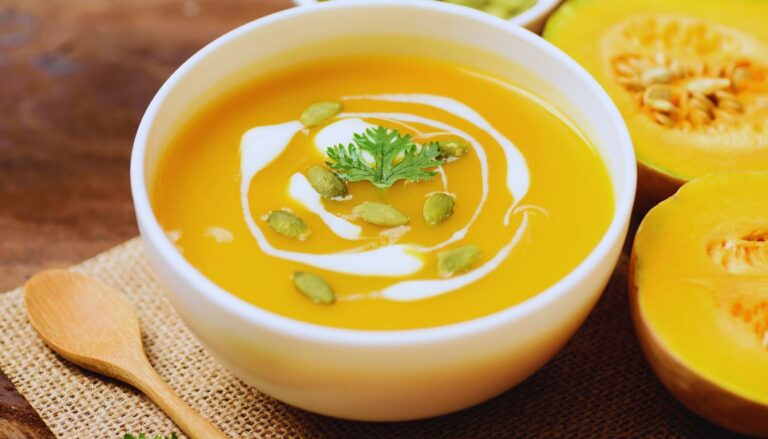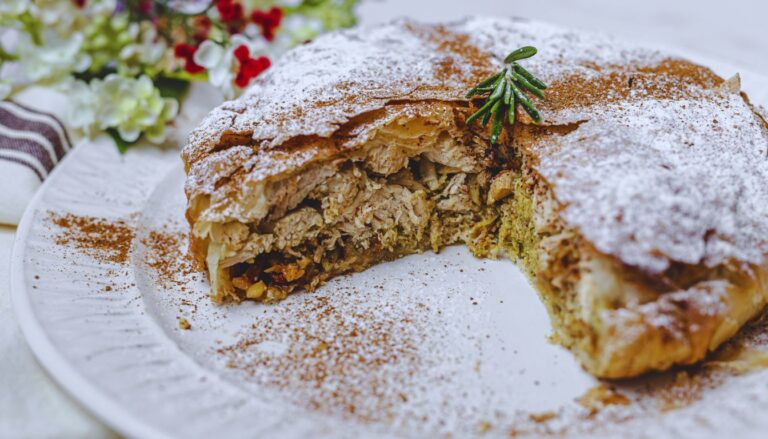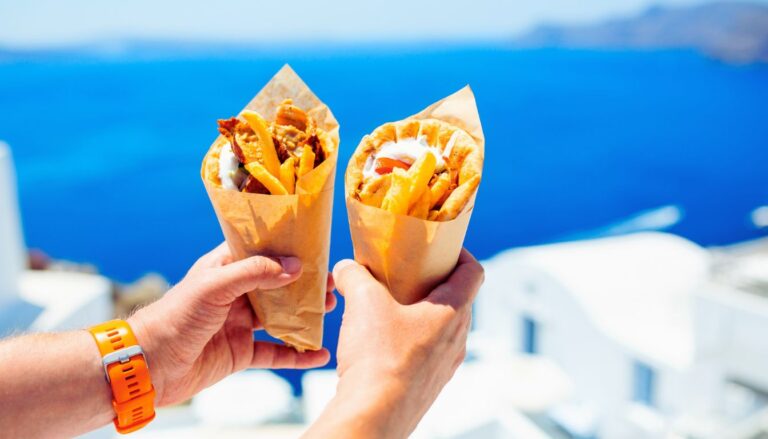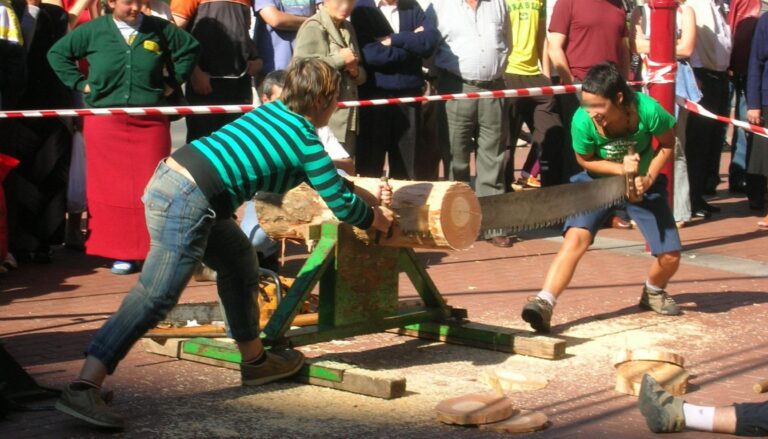Pecorino Sardo, also known as Fiore Sardo, is a cheese that embodies the spirit of Sardinia, an Italian island renowned for its rugged landscapes and rich culinary traditions. This beloved cheese is not just a food item; it’s a cultural icon that has been an integral part of Sardinian life for thousands of years.
Made exclusively from the milk of sheep raised on the island, Pecorino Sardo carries the distinct flavors of Sardinia’s diverse terroir. The cheese’s unique characteristics are shaped by the island’s Mediterranean climate, the aromatic herbs that grow wild in its pastures, and the ancient cheese-making techniques passed down through generations of Sardinian shepherds and artisans.
Pecorino Sardo’s importance is officially recognized by its DOP (Denominazione di Origine Protetta) status, or Protected Designation of Origin. This European Union certification ensures that only cheese produced in Sardinia according to strict traditional methods can bear the name Pecorino Sardo. This protection not only guarantees the authenticity of the cheese but also helps preserve the cultural heritage and economic livelihood of Sardinian cheese makers.
As we delve deeper into the world of Pecorino Sardo, we’ll discover its rich history, explore its varieties, and understand why this cheese continues to captivate food lovers around the world.
Table of Contents
The Rich History of Pecorino in Sardinia
The story of Pecorino Sardo is inextricably linked to the history of Sardinia itself. Sheep farming on the island dates back to Neolithic times, with archaeological evidence suggesting that Sardinians have been making cheese for over 5,000 years.
The abundance of wild herbs and shrubs in Sardinia’s rugged interior made the island particularly well-suited for sheep farming. As early as the Bronze Age, the Nuragic civilization that inhabited Sardinia was known for its advanced animal husbandry practices and cheese-making skills.
Throughout the centuries, as various civilizations came and went, the tradition of sheep farming and cheese making remained a constant in Sardinian life. The Romans, who conquered Sardinia in 238 BCE, prized the island’s cheese, often exporting it back to the Italian mainland.
During the Middle Ages, Pecorino became an important trade commodity for Sardinia. The cheese’s hard texture and long shelf life made it ideal for long sea voyages, and it became a staple food for sailors and soldiers. This period saw the refinement of cheese-making techniques, with producers developing methods to create cheeses that could withstand extended periods of aging.
The 19th and early 20th centuries brought significant changes to Sardinian agriculture, including the modernization of farming practices. However, the production of Pecorino Sardo remained largely traditional, with many families continuing to make cheese using methods handed down through generations.
In 1996, Pecorino Sardo received DOP status, recognizing its unique qualities and protecting its traditional production methods. This designation has helped to preserve the cheese’s authenticity and support the livelihoods of Sardinian shepherds and cheese makers in an increasingly globalized food market.
Today, Pecorino Sardo stands as a testament to Sardinia’s enduring pastoral traditions, connecting modern consumers to millennia of cheese-making history.
Types of Pecorino Sardo
Pecorino Sardo comes in two main varieties, each with its own distinct characteristics:
- Pecorino Sardo Dolce (Young Pecorino):
- Also known as “Fiore Sardo”
- Aged for 20-60 days
- Softer texture with a white or pale yellow color
- Mild, slightly sweet flavor with grassy and milky notes
- Often used for cooking or as a table cheese
- Pecorino Sardo Maturo (Aged Pecorino):
- Aged for at least 2 months, often up to a year or more
- Harder texture with a dark yellow to brown rind
- Strong, sharp flavor with complex nutty and tangy notes
- Excellent for grating over pasta or eating as a standalone cheese
Beyond these two main types, there are regional variations of Pecorino Sardo that reflect local traditions and terroir:
- Pecorino di Osilo: Produced in the northwestern part of Sardinia, known for its delicate flavor and slightly spicy aftertaste.
- Pecorino di Nulvi: Made in the Anglona region, this cheese is often smoked, giving it a unique flavor profile.
- Casu Marzu: A controversial specialty cheese that contains live insect larvae. It’s illegal to sell but remains a part of Sardinian cultural heritage.
Each type of Pecorino Sardo offers a different experience, from the mild and versatile young cheeses to the bold and complex aged varieties. This diversity reflects the rich cheese-making traditions of Sardinia and provides a range of options for different culinary applications and taste preferences.
The Art of Making Pecorino Sardo
The production of Pecorino Sardo is a carefully crafted process that combines ancient traditions with modern quality control standards. Here’s an overview of how this prized cheese is made:
- Milk Collection: The process begins with the collection of fresh sheep’s milk. The sheep are typically of local Sardinian breeds, such as Sarda, which are well-adapted to the island’s terrain and climate.
- Curdling: The milk is gently heated and mixed with rennet, a natural enzyme that causes the milk to coagulate and form curds. Traditionally, rennet from lamb or kid stomachs was used, though many producers now use vegetarian alternatives.
- Cutting the Curd: Once the milk has curdled, the cheese maker cuts the curd into small pieces to release the whey.
- Molding: The curds are then placed into molds, traditionally made of wood but now often made of food-grade plastic for hygiene reasons.
- Pressing: The cheese is pressed to remove more whey and give it its characteristic shape.
- Salting: After pressing, the cheese is salted, either by rubbing salt on the surface or by immersion in brine. This process adds flavor and helps preserve the cheese.
- Aging: The cheese is then left to age in cool, humid cellars. For Pecorino Sardo Dolce, this process lasts 20-60 days, while Pecorino Sardo Maturo is aged for at least two months and often much longer.
- Turning and Care: During the aging process, the cheeses are regularly turned and their surfaces are cleaned to ensure even aging and prevent unwanted mold growth.
While the basic process remains true to tradition, modern Pecorino Sardo production also incorporates contemporary food safety practices and quality control measures. Many producers now use stainless steel equipment and adhere to strict hygiene protocols while still maintaining traditional cheese-making techniques.
Artisanal cheese makers play a crucial role in preserving the authenticity of Pecorino Sardo. These skilled craftspeople often work in small-scale operations, using milk from their own flocks or sourcing from local shepherds. Their expertise, passed down through generations, ensures that each wheel of Pecorino Sardo is a testament to Sardinian cheese-making tradition.
The art of making Pecorino Sardo is protected by its DOP status, which specifies the geographical area of production, the breeds of sheep that can be used, and the methods of production. This helps to maintain the cheese’s unique character and supports the continuation of traditional cheese-making practices in Sardinia.
Flavor Profile and Tasting Notes
The flavor profile of Pecorino Sardo is as varied and complex as the Sardinian landscape itself. The taste can range from mild and sweet to sharp and tangy, depending on the age of the cheese and the specific production methods used.
Pecorino Sardo Dolce (Young Pecorino):
- Aroma: Mild and slightly aromatic, with hints of fresh milk and grass
- Texture: Soft and elastic, with a smooth, creamy mouthfeel
- Taste: Delicate and slightly sweet, with subtle notes of fresh grass and flowers
- Aftertaste: Clean and pleasant, with a gentle lingering flavor
Pecorino Sardo Maturo (Aged Pecorino):
- Aroma: Strong and pungent, with notes of nuts and dried herbs
- Texture: Hard and granular, often with a slight crunch from protein crystals that form during aging
- Taste: Sharp and intense, with complex flavors of toasted nuts, caramel, and a distinctive tang
- Aftertaste: Long-lasting and robust, often with a slight piquancy
Several factors influence the flavor of Pecorino Sardo:
- Sheep’s Diet: The wild herbs and grasses that Sardinian sheep graze on impart unique flavors to the milk, which are then concentrated in the cheese.
- Aging Process: As the cheese ages, its flavor becomes more intense and complex. Enzymes break down proteins and fats, creating new flavor compounds.
- Seasonality: Cheese made from spring milk, when the pastures are at their most lush, may have different flavor notes compared to cheese made from autumn milk.
- Production Methods: Small variations in production techniques, such as the temperature of curdling or the length of brining, can affect the final flavor of the cheese.
- Terroir: The specific microclimate and soil conditions of different parts of Sardinia can influence the characteristics of the milk and, consequently, the cheese.
When tasting Pecorino Sardo, experts recommend letting the cheese come to room temperature to fully appreciate its flavors. It’s often suggested to start with younger varieties and move to more aged cheeses to experience the full spectrum of flavors that Pecorino Sardo has to offer.
The complex and varied flavor profile of Pecorino Sardo makes it a versatile cheese that can be enjoyed on its own, paired with other foods, or used in cooking to add depth and richness to a wide range of dishes.
Pecorino Sardo in Sardinian Cuisine
Pecorino Sardo is not just a cheese in Sardinia; it’s a cornerstone of the island’s cuisine, appearing in a wide variety of traditional dishes and modern culinary creations. Its versatility and distinctive flavor make it an essential ingredient in many Sardinian recipes.
Traditional Sardinian dishes featuring Pecorino Sardo include:
- Culurgiones: A type of stuffed pasta similar to ravioli, often filled with a mixture of potatoes, Pecorino, and mint.
- Pane Frattau: Layers of thin, crispy flatbread softened with broth and topped with tomato sauce, poached eggs, and grated Pecorino.
- Malloreddus alla Campidanese: Small Sardinian gnocchi served with a sausage and tomato sauce, topped with grated Pecorino.
- Zuppa Gallurese: A hearty “soup” made with layers of bread, broth, and melted cheese, including Pecorino.
- Seadas: A traditional dessert of fried pastry filled with young Pecorino and drizzled with honey.
In modern Sardinian cuisine, chefs are finding new ways to incorporate Pecorino Sardo into their dishes:
- Pecorino-crusted lamb or fish
- Risottos finished with aged Pecorino for added depth of flavor
- Salads featuring shaved Pecorino and local produce
- Pecorino-stuffed vegetables or meats
As a table cheese, Pecorino Sardo is often served as part of an antipasto platter, alongside other Sardinian specialties like cured meats, olives, and locally baked bread. Young Pecorino can be enjoyed fresh, while aged varieties are often grated over pasta dishes or soups.
The use of Pecorino Sardo in Sardinian cuisine goes beyond its flavor contributions. It also represents a connection to the island’s pastoral heritage and serves as a symbol of Sardinian identity. Many Sardinian families have their own cherished recipes featuring Pecorino, passed down through generations.
For visitors to Sardinia, trying local dishes that feature Pecorino Sardo is an essential part of experiencing the island’s culinary culture. It offers a taste of Sardinia’s traditions and a glimpse into the important role that this cheese plays in the everyday lives of Sardinians.
Pairing Pecorino Sardo with Other Foods
Pairing Pecorino Sardo with the right complementary foods can enhance its flavors and create a truly memorable culinary experience. The key is to consider the age and intensity of the cheese when choosing pairings.
Complementary Foods:
- Fresh and dried fruits: Pears, figs, and grapes pair well with both young and aged Pecorino
- Nuts: Almonds and walnuts complement the nutty flavors in aged Pecorino
- Honey: A drizzle of local Sardinian honey can balance the saltiness of the cheese
- Olives and olive oil: The brininess of olives and the fruity notes of olive oil enhance the cheese’s flavors
- Crusty bread or crackers: Provides texture and a neutral base for the cheese
Creating a Sardinian-inspired Cheese Board:
To create an authentic Sardinian cheese board featuring Pecorino Sardo, consider including:
- A selection of Pecorino Sardo at different ages
- Other Sardinian cheeses like Casizolu or Fiore Sardo
- Local cured meats such as Prosciutto di Suino Nero or Salsiccia Sarda
- Sardinian flatbread (Pane Carasau)
- Local olives and extra virgin olive oil
- Sardinian honey or jam (like bitter honey from strawberry tree flowers)
- Fresh or dried figs
- A small bowl of salted almonds
When pairing foods with Pecorino Sardo, consider the principle of contrast and complement. The salty, savory notes of the cheese can be balanced by sweet elements like honey or fruit, while its rich, complex flavors can be enhanced by similarly robust foods like cured meats or nuts.
Remember that the goal of pairing is to create a harmonious experience where both the cheese and its accompaniments shine. Don’t be afraid to experiment with different combinations to find what appeals most to your palate.
Nutritional Benefits of Pecorino Sardo
Pecorino Sardo is not only delicious but also offers several nutritional benefits. As with all cheeses, it should be consumed in moderation as part of a balanced diet. Here’s an overview of its nutritional profile:
- Protein: Pecorino Sardo is an excellent source of high-quality protein, essential for muscle growth and repair.
- Calcium: Like most cheeses, it’s rich in calcium, which is crucial for bone health and various bodily functions.
- Vitamins: It contains vitamins A, B2 (riboflavin), and B12, which are important for eye health, energy metabolism, and nerve function, respectively.
- Minerals: Besides calcium, Pecorino Sardo provides phosphorus, zinc, and selenium, all of which play vital roles in maintaining overall health.
- Conjugated Linoleic Acid (CLA): Sheep’s milk cheeses like Pecorino Sardo are naturally high in CLA, which some studies suggest may have anti-inflammatory and heart-protective properties.
- Healthy Fats: While it is high in fat, a significant portion of this is healthy saturated and monounsaturated fats.
Compared to other cheeses:
- Pecorino Sardo is generally higher in protein and calcium than cow’s milk cheeses.
- It’s typically lower in lactose than fresh cheeses, making it potentially more tolerable for some individuals with mild lactose intolerance.
- Its fat content is similar to other hard cheeses but may vary depending on the specific production methods and aging time.
Considerations for dietary restrictions:
- Pecorino Sardo is not suitable for vegans or those with severe dairy allergies.
- It’s high in sodium, so individuals on low-sodium diets should consume it in moderation.
- The cheese contains no carbohydrates, making it suitable for low-carb or ketogenic diets.
- Those with high cholesterol should consult with a healthcare provider about including Pecorino Sardo in their diet.
While Pecorino Sardo offers nutritional benefits, it’s important to enjoy it as part of a varied and balanced diet. Its rich flavor means a little goes a long way, allowing you to savor its taste while keeping portion sizes in check.
Buying and Storing Pecorino Sardo
To fully appreciate Pecorino Sardo, it’s important to know how to select a quality cheese and store it properly. Here are some tips for buying and storing this Sardinian delicacy:
Selecting Quality Pecorino Sardo:
- Look for the DOP label: This ensures you’re getting authentic Pecorino Sardo made according to traditional methods in Sardinia.
- Check the rind: It should be smooth and free from cracks or excessive mold. Some natural mold is normal, especially on aged cheeses.
- Smell the cheese: It should have a pleasant, slightly sharp aroma. Avoid any cheese with an ammonia-like smell.
- Consider the age: Decide whether you prefer the milder flavor of young Pecorino or the sharper taste of aged varieties.
- Buy from reputable sources: Specialty cheese shops or Italian markets are more likely to have high-quality, well-stored Pecorino Sardo.
Proper Storage Techniques:
- Temperature: Store Pecorino Sardo in the refrigerator at around 40°F (4°C).
- Wrapping: Wrap the cheese in wax paper or cheese paper, then loosely in plastic wrap. This allows the cheese to breathe while preventing it from drying out.
- Location: Keep the cheese in the vegetable crisper drawer of your refrigerator, where the temperature is most consistent.
- Avoid freezing: Freezing can alter the texture and flavor of the cheese.
- Serving: Before serving, allow the cheese to come to room temperature for about an hour to enhance its flavor and aroma.
- Shelf life: Properly stored, an unopened wheel of Pecorino Sardo can last several months. Once cut, try to consume it within a few weeks for the best quality.
Finding Authentic Pecorino Sardo in the US:
While it may not be as readily available as some other Italian cheeses, there are ways to find authentic Pecorino Sardo in the United States:
- Specialty cheese shops: Many larger cities have shops specializing in imported cheeses.
- Italian markets: Stores focusing on Italian imports are likely to carry Pecorino Sardo.
- Gourmet food stores: Upscale grocery stores often have a selection of imported cheeses.
- Online retailers: Several reputable online gourmet food shops offer Pecorino Sardo for delivery.
- Italian restaurants: Some high-end Italian restaurants may sell portions of their imported cheeses.
When purchasing Pecorino Sardo, don’t hesitate to ask the cheesemonger for a sample and for information about the cheese’s age and origin. A knowledgeable seller can help you select a cheese that best suits your taste preferences and intended use.
Remember, while it may be tempting to buy pre-grated cheese for convenience, it’s always best to buy Pecorino Sardo whole and grate it yourself as needed. This ensures the best flavor and allows you to fully appreciate the cheese’s unique characteristics.
Pecorino Sardo vs. Other Italian Cheeses
While Pecorino Sardo is a distinctive cheese in its own right, it’s often compared to other Italian cheeses, particularly other types of Pecorino. Understanding these comparisons can help appreciate the unique qualities of Pecorino Sardo.
Pecorino Sardo vs. Pecorino Romano:
- Origin: Sardo is from Sardinia, while Romano is traditionally from Lazio (though now also produced in Sardinia and Grosseto).
- Taste: Sardo tends to be less salty and more complex in flavor than Romano.
- Texture: Sardo is often smoother and less granular than Romano.
- Use: While both are used for grating, Sardo is more commonly eaten as a table cheese, especially when young.
Pecorino Sardo vs. Pecorino Toscano:
- Origin: Sardo is from Sardinia, Toscano from Tuscany.
- Flavor: Toscano is generally milder and less tangy than Sardo.
- Aging: Sardo is often aged longer than Toscano, resulting in a more intense flavor.
- Production: Sardo must be made with milk from sheep raised in Sardinia, while Toscano allows for some cow’s milk to be mixed in.
Unique Characteristics of Sardinian Pecorino:
- Terroir: The unique Sardinian landscape and flora contribute to distinctive flavor notes not found in other Pecorinos.
- Traditional Methods: Many producers in Sardinia still use ancient techniques, including smoking the cheese, which is less common in other regions.
- Variety: Pecorino Sardo comes in a wide range of ages and styles, from very young and mild to extremely aged and sharp.
Understanding Different Italian PDO Cheeses:
PDO (Protected Designation of Origin) or DOP in Italian, is a certification that guarantees a product’s place of origin and traditional production methods. Other notable Italian PDO cheeses include:
- Parmigiano Reggiano: A cow’s milk cheese from Emilia-Romagna and parts of Lombardy and Mantua.
- Gorgonzola: A blue cheese from Piedmont and Lombardy.
- Mozzarella di Bufala Campana: A fresh cheese made from water buffalo milk in select areas of Campania, Lazio, Puglia, and Molise.
Each PDO cheese represents a unique combination of geographical location, local traditions, and specific production methods. Pecorino Sardo’s PDO status ensures that it remains a true representation of Sardinian cheese-making artistry.
While it’s natural to compare Pecorino Sardo to other Italian cheeses, it’s important to appreciate each for its unique qualities. Pecorino Sardo stands out for its distinctive Sardinian character, reflecting the island’s rugged landscape and ancient pastoral traditions in every bite.
Sustainable Practices in Pecorino Production
The production of Pecorino Sardo is deeply intertwined with Sardinia’s environment and traditional way of life. In recent years, there has been an increased focus on sustainable practices in cheese production, aiming to preserve both the quality of the cheese and the island’s unique ecosystem.
Traditional Pastoral Farming Methods:
Sardinian shepherds have practiced sustainable farming for millennia, using methods that work in harmony with the local environment:
- Transhumance: The seasonal movement of flocks between lowland winter pastures and mountain summer grazing areas. This practice allows pastures to regenerate naturally and prevents overgrazing.
- Extensive Grazing: Sheep are allowed to roam freely over large areas, reducing the environmental impact and contributing to the diversity of flora in the pastures.
- Natural Fertilization: Sheep manure helps maintain soil fertility without the need for chemical fertilizers.
- Water Conservation: Traditional farming methods are adapted to Sardinia’s dry climate, minimizing water usage.
Environmental Impact of Sheep Farming in Sardinia:
While sheep farming does have an environmental impact, traditional Sardinian methods are generally considered more sustainable than intensive farming practices:
- Biodiversity: Grazing sheep help maintain open landscapes, which are crucial for many plant and animal species.
- Carbon Sequestration: Well-managed pastures can act as carbon sinks, helping to mitigate climate change.
- Fire Prevention: Grazing reduces the buildup of dry vegetation, helping to prevent wildfires.
However, challenges remain, including soil erosion in some overgrazed areas and the need to balance sheep farming with wildlife conservation efforts.
Efforts to Preserve Native Sardinian Sheep Breeds:
Preserving native sheep breeds is crucial for maintaining the unique characteristics of Pecorino Sardo and supporting biodiversity:
- Sarda Sheep: The primary breed used for Pecorino Sardo production. Efforts are being made to maintain the purity of this breed and improve its resilience to climate change.
- Nera di Arbus: A rare black sheep breed native to Sardinia. Conservation programs aim to increase its population and promote its use in cheese production.
- Genetic Research: Studies are being conducted to understand and preserve the genetic diversity of Sardinian sheep breeds.
Sustainable Innovations in Cheese Production:
Many Pecorino Sardo producers are adopting modern sustainable practices:
- Renewable Energy: Some dairies are installing solar panels to reduce their carbon footprint.
- Waste Reduction: Whey, a by-product of cheese making, is being used for animal feed or to produce ricotta cheese.
- Packaging: There’s a growing trend towards eco-friendly packaging materials.
- Organic Certification: Some producers are obtaining organic certification, ensuring that no synthetic pesticides or fertilizers are used in sheep farming.
The sustainable production of Pecorino Sardo is not just about preserving a traditional product; it’s about maintaining a way of life that has shaped Sardinia’s landscape and culture for thousands of years. By supporting sustainable Pecorino Sardo production, consumers can play a part in preserving this unique heritage for future generations.
Conclusion: The Enduring Legacy of Pecorino Sardo
Pecorino Sardo is more than just a cheese; it’s a testament to Sardinia’s rich cultural heritage, a symbol of the island’s enduring pastoral traditions, and a culinary treasure that continues to captivate food lovers around the world.
Throughout this exploration, we’ve uncovered the many facets that make Pecorino Sardo special:
- Its ancient history, deeply rooted in Sardinia’s landscape and way of life
- The meticulous artisanal processes that go into its production
- The diverse flavor profiles that range from mild and sweet to sharp and complex
- Its versatility in Sardinian cuisine and beyond
- The nutritional benefits it offers as part of a balanced diet
- The sustainable practices that are helping to preserve both the cheese and Sardinia’s unique ecosystem
As we look to the future, Pecorino Sardo faces both challenges and opportunities. The increasing global demand for authentic, artisanal products presents a chance for wider recognition of this unique cheese. However, it also brings the challenge of maintaining traditional production methods and supporting small-scale producers in an increasingly competitive market.
The future of Pecorino Sardo lies in striking a balance between preserving tradition and embracing innovation. This might include:
- Continuing to promote sustainable and ethical farming practices
- Exploring new markets while maintaining the cheese’s authenticity
- Educating consumers about the unique qualities of Pecorino Sardo
- Supporting young cheese makers to ensure the continuation of traditional skills
For food enthusiasts, particularly those in the United States, experiencing authentic Pecorino Sardo offers a taste of Sardinia’s rich culinary heritage. Whether enjoyed on its own or used to elevate a favorite recipe, Pecorino Sardo provides a direct connection to the passionate artisans and ancient traditions that have shaped it over millennia.
We encourage readers to seek out authentic Pecorino Sardo, to savor its unique flavors, and to appreciate the centuries of tradition encapsulated in each bite. By doing so, you’re not just enjoying a delicious cheese, but also supporting a sustainable, traditional way of life and helping to ensure that the legacy of Pecorino Sardo continues for generations to come.
Discover the must-visit cultural destinations of Sardinian culture


